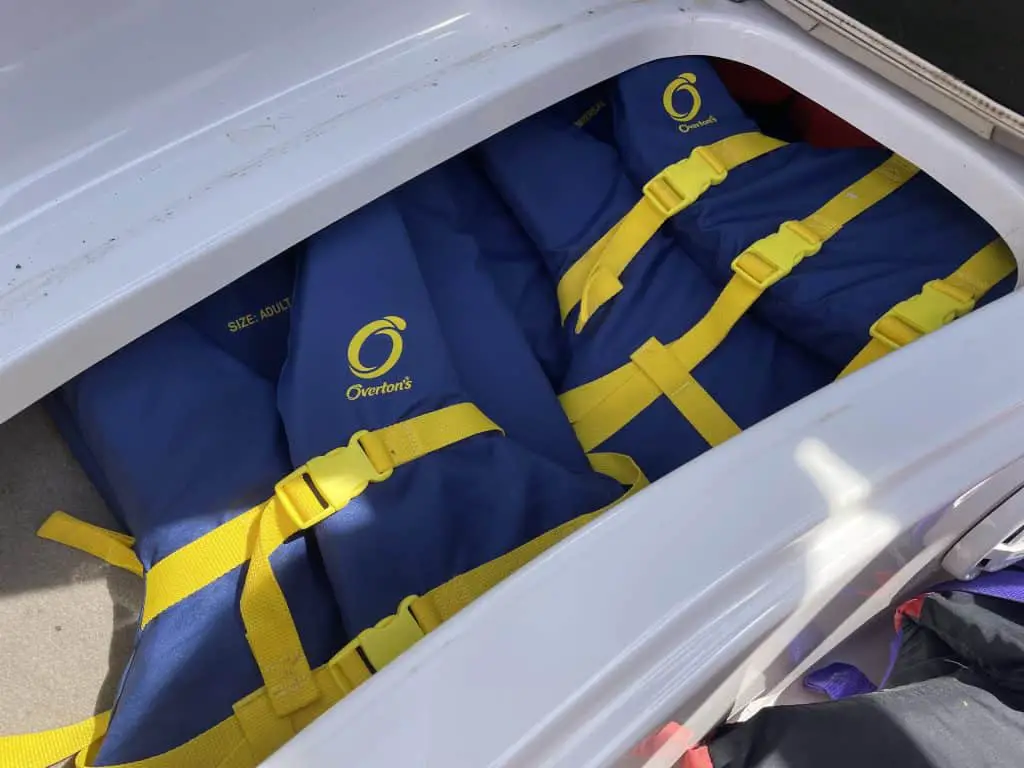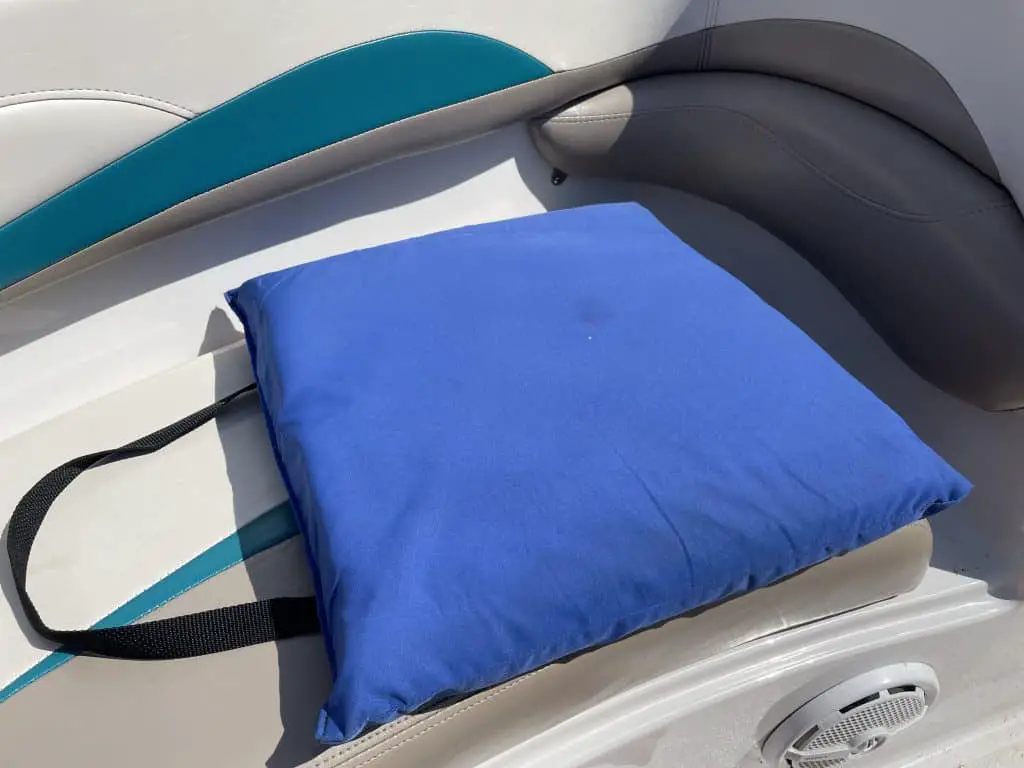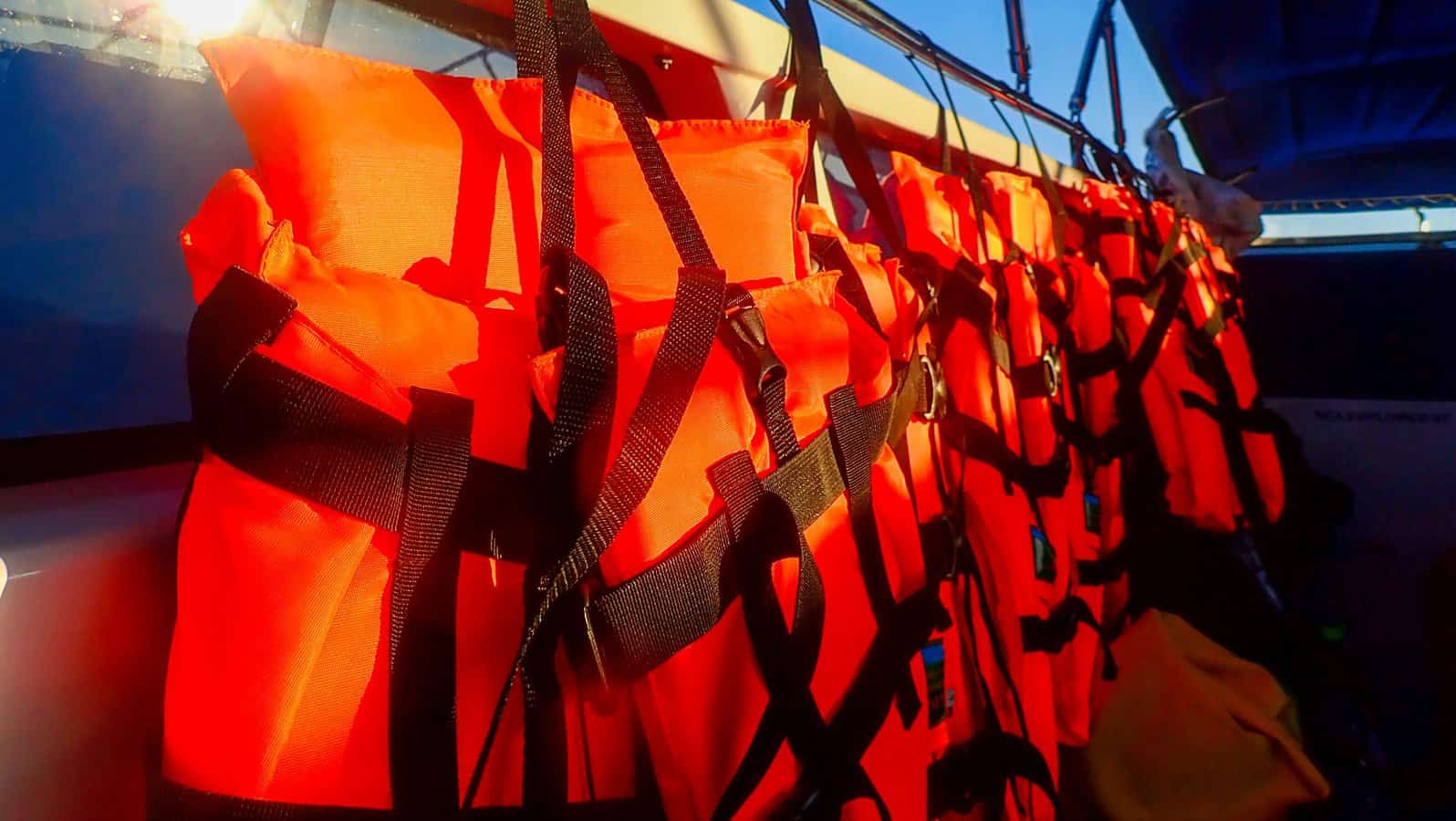A personal floatation device (PFD) is also known as a life jacket, vest, life belt, life preserver, buoyancy aid, or flotation suit. A PFD is a lifesaving apparatus that prevents drowning through floatation. There are five official classifications of PFDs.
PFDs must be within easy reach and unobstructed. Accessibility is imperative. During an emergency, people must be swiftly and safely geared. Wearing a PFD throughout the boat trip is recommended. Your PFDs must be within clear sight. Drowning is almost immediate, so time is a critical factor.
Statistics reveal that over two-thirds of boating fatalities are drowning-related, and 90% of victims were not wearing PFDs. PFDs are a legal requirement by the United States Coast Guard.

The Best Place to Put Your PFDs While Out on Your Boat
Knowing where to place and access your PFDs could be lifesaving. Typically, PFDs are placed on the surface of the boat’s top deck.
However, they also can be stored in a boat box seat. However, visibility is crucial, so an open box is better. Never put a PFD within a locked compartment.
Noticeability, safety, and accessibility are the essential features when storing PFDs and having passengers on board. PFDs must also be serviceable and in good condition.
Place the PFDs on the top deck, as this is where the boat’s passengers are seated. Nothing must obstruct the accessibility of PFDs.
Why You Should Be Able To Easily Access PFDs
When on a boat, passengers frequently prefer to feel relaxed and enjoy their time. The need to wear a bulking, uncomfortable PFD is replaced by the joy of an open water ride.
Therefore, issues around storing PFDs are a significant concern. Immediacy in the likelihood of an accident is imperative.
Ensure nothing is covering the PFD gear and hindering access. Accessibility is vital as saving time means saving a life in the event of an accident.
Be mindful of their relevance and the potential dangers passengers could face without a PFD. Any open waters boat ride holds immense potential for drowning.
Drowning can occur in under 60 seconds. For children, the time could be even less. Drowning is tragic as it is preventable.
Drowning is an excruciating way to die, and even though it happens so quickly, it will feel much longer when it happens.
It also doesn’t take much water to drown. Therefore, any body of water presents a risk.
Human nature is all about risk-taking. Statistics reveal that there is always at least one person who believes the risk of drowning won’t land on them. This mindset will also dictate that wearing a life jacket is unnecessary.
That is why knowing where the PFDs are in advance and keeping the PFD within reach is critical.
Coast Guard Safety Checks Often Reveal Poorly Placed PFDs
There are frequent reports by the United States Coast Guard that when doing a vessel check, the placement of PFDs is not readily accessible.
The requirement to make PFDs readily accessible means to swiftly retrieve the PFD in the quickest possible time, without using instruments to assist retrieval.
PFDs must not be stored in plastic wrappers, left down in the bilge, or locked compartments. (As mentioned above).
The fabric of a plastic wrapper binds to the PFD and creates delay. If left in the bilge, the PFD will deteriorate due to lack of care. Store your PFD away from gasoline.
PFDs must not have any other objects thrown on them. Again, being aware of the immediacy of drowning and accessibility is simply intelligent.
PFD Requirements
The operator is responsible for informing all passengers of the importance of PFDs. Instruction includes the location of PFD and how to proceed in an emergency.
Every boat must have a portable PFD for each person on board. Children are always required to wear a verified Coast Guard PFD while on the vessel.
The United States Coast Guard has regulations that obligate passengers aboard a vessel to have the proper size PFD and correct type.
The size of PFD depends on the passenger’s age, weight, and chest measurement. Exceptions include children under 20 lbs. and chest range exceeding 55 inches. PFDs should have Coast Guard verified markings.
If a boat vessel is larger than 15 feet, it is legally mandated to have a Type IV PFD on board. (Discussed below)
Different Types of PFDs
There are five different kinds of models of PFDs. The boat owner is legally responsible for ensuring the vessel has all necessary equipment on board.
PFD classification or type is determined according to speed, intense winds, rough tide, and water temperature. Typically, PFDs are covered in the required reflective surface material but can be a variety of bright colors.
Recreational vessels must have the official Type I, Type II, Type III, Type IV, and Type V PFDs required by law. The requirements are simple and easy to follow.

The U.S. Coast Guard must validate the PFDs, and they must be the correct size for each member on board. Follow the proper procedures of PFD requirements for children.
Type I PFD- Offshore Lifejackets
Type I is the safest lifejacket that maintains high-coverage maximum flotation. It’s designed for the rough tide, stormy oceans, and choppy remote waters. Type I facilitates survival during prolonged periods of floating in open water.
Type II PFD- Near-Shore Buoyant Vests
Type II is designed for more subdued waters and requires less flotation. They have a buoyancy of at least 15.5 lbs. for adults.
This kind of PFD is for inland waters where swift rescue is possible. Only a few brands of Type II PFDs automatically turn the wearer face-up.
Type III PFD- Flotation Aids
Type III PFDs are like Type II PFDs as they have the same amount of buoyancy, 15.5 lbs. Type III is generally used for recreational boating like kayaking, canoeing, and sailing. This PFD doesn’t automatically turn the wearer face up.
Type IV PFD- Throwable Devices
Any water vessels over 15 feet are legally obligated to have a Type IV PFD on board. Type IV isn’t designed as a vest. It’s a throw-over device.
Frequently, they are fashioned as rings, horseshoes, or cushions with handles/straps. Their buoyancy varies from 16.5-18 lbs.
Type V PFD- Inflatable and Portable
Type V PFDs are inflatable, lightweight, and comfortable. However, they are not for non-swimmers. Type V has a buoyancy of 15.5 lbs to 22 lbs.
They are used for sail harnesses, deck suits, and kayaking rescue vests. Type V PFD requires training before its worn, as it has numerous functions and features.
How to Ensure PFDs are Serviceable and in Good Condition
The PFDs must be in good condition, with no tears and rips. Maintenance and inspection are simple and require care.
Gently wipe down your PFD with soapy, warm water. If you decide on an inflatable PFD, pay attention to not exposing or immersing the inflator in water. Don’t fully immerse any PFD in water when washing.
Frequently inspect the status of the inflator. The CO2 cylinder must be free of leaks, not be used, and screwed on tightly. Replace the cylinder once spent.
It’s a good idea to detach the cylinder and inflate it by physically blowing into the PFD- to check if the apparatus has any leaks. When inflating the PFD, it should stay firm for several hours.
The sun’s harmful ultraviolet radiation will deteriorate PFDs under prolonged exposure. However, mold can thrive in dark, damp conditions. Store in a well-ventilated space and with good enough light.
Habitually test the PFDs buoyancy, which can be done in a pool or shallow tide. Regularly check for cuts, breaks, or tears. Ensure the zips and other security features are working.
Dispose of any PFD if it displays signs of deterioration, overuse, and even fading in color. Colors are an essential safety feature of PFDs. Replace with brand new PFDs. Discard if Coast Guard-approved label is worn through use.
Conclusion
PFDs are proven to be lifesaving in an emergency. Therefore, knowing where to place PFDs correctly is vital. PFDs must be placed within clear view and completely unobstructed on the top deck. They must be noticeable, accessible, secure, and serviceable. Always ensure PFDs are in excellent condition. Drowning causes unnecessary fatalities.
There are five official types of PFDs, and the classification ranges on function, safety, water and wind conditions, age, and capability of passengers. The appropriate PFDs will have Coast Guard-approved labels. Any water vessel that exceeds 16 feet is legally required to have a Type IV PFD on board.
Project “Stored And Ready“ Boating
Check out our article on: What Should You Do Before Fueling Your Boat?

